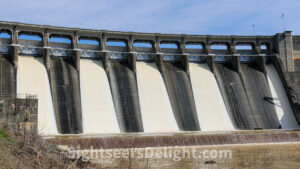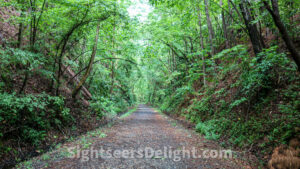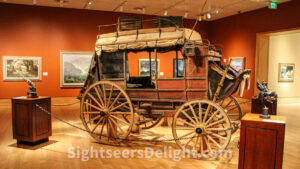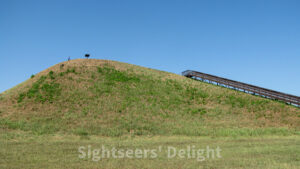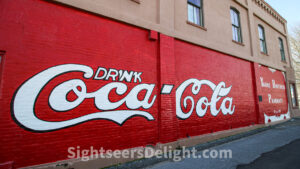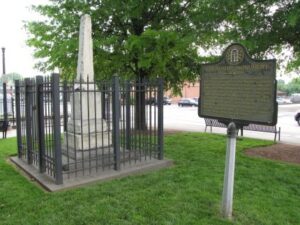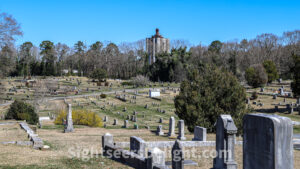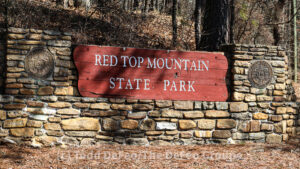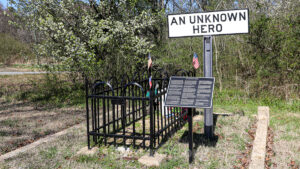The Flood Control Act of 1941 and the Flood Control Act 1944 authorized the construction Allatoona Dam, but World War II delayed the start of work. Construction began in 1946, and reservoir started to fill in during December 1949, eventually flooding the town of Allatoona. In January 1950, the dam and power station were operation in January 1950. Today, the U.S. Army Corps of Engineers owns and operates the dam.
30121
After Atlanta fell, Confederate Gen. John Bell Hood began marching toward Nashville, Tenn., hoping to break Sherman’s supply line. Hood attacked at Union troops positioned at a railroad pass southeast of Cartersville. The Battle of Allatoona Pass on Oct. 5, 1864, is among the Civil War’s bloodiest battles, and roughly 1,600 soldiers on both sides died. The railroad has been rerouted, but the battle site now sits on the edge of Lake Allatoona and is part of Red Top Mountain State Park.
30120
The Booth Western Art Museum opened in August 2003 and showcases Western art. The Smithsonian Institution affiliate is said to be the largest permanent exhibition space for Western art nationwide. The 120,000-square-foot museum is the second-largest art museum in Georgia, featuring works by Frederic Remington, Albert Bierstadt, George Caitlin and Charles Russell. Visitors can explore America’s history through contemporary Western artwork, a Presidential Gallery and a Civil War art gallery.
Directions: Booth Western Art Museum, 501 N. Museum Drive, Cartersville, GA 30120. Take I-75 to exit 288 – Main Street, Cartersville. Head West. Follow Main Street (Highway 113/61) into the business district, approximately 2.2 miles. Turn right on Gilmer Street, travel two blocks under the bridge, and the museum is on the left. Free parking is available in the Tabernacle Baptist Church parking lot on Gilmer Street, across from the Museum entrance.
Hours (as of April 12, 2023): Tuesday, Wednesday, Friday, and Saturday: 10 a.m. – 5 p.m. Thursday: 10 a.m.-8 p.m. Sunday: 1-5 p.m. Closed Mondays, New Year’s Day, July 4, Thanksgiving Day and Christmas Day.
Admission (as of April 12, 2023): Adult: $13.00; Senior (65+): $11.00; Student (with ID): $10.00; Children 12 and under are free (must be accompanied by parent or guardian); Active Military Personnel (with ID): Free (half price regular admission for all immediate family members of the active-duty person); Booth Museum members are free; First Thursday of each month: free admission for all between 4-8 p.m.
30120
Located on the north shore of the Etowah River and south of modern-day Cartersville, the mounds were inhabited from 1000 to 1550 by Muskogean Native Americans of the Mississippian culture, so named because the culture originated along the banks of the Mississippi River. Designated a National Historic Landmark in the 1960s, this 54-acre state park includes a museum with artifacts discovered at the site, six mounds the natives built, and a number of other related sites. The now 1,000-year-old Native American town is generally believed to be a city Hernando de Soto visited in 1540 when he was exploring the area. By that time, according to historians, the civilization was in decline and the Etowah Indian Mounds may have been abandoned.
30120
A Coca-Cola syrup salesman named James Couden painted a sign advertising the soda on the side of Young Brothers Pharmacy (known as Young Bros Drug Company at the time). It turns out he made history with his work of art as this was the first Coca-Cola painted wall sign in the world. The pharmacy celebrates the advertisement with a display of Coke memorabilia and collectibles. Interestingly, the Coca-Cola Co. regularly repainted the sign until the late 1970s, but underneath all those paint jobs was the original sign, which was restored in 1989.
30120
When Mark Anthony Cooper found himself $100,000 in debt in 1857 and his company, the Etowah Iron and Manufacturing Co., was about to be auctioned, he turned to his friends for help. With the help of 38 friends, Cooper raised $200,000 and purchased back his company. But, he didn’t forget his friends, and in 1860, after he repaid the debt, Cooper built a monument to thank them. The monument was originally erected on the town square of Etowah where his iron company was located. In 1864, the monument survived the wrath of Union soldiers led by Gen. William T. Sherman. In 1927, as the federal government was poised to create Lake Allatoona, the monument was relocated to nearby Cartersville. Three decades later, the monument was moved to the banks of Lake Allatoona to make room for more parking spaces in downtown Cartersville. In 1999, the monument moved to its current location in downtown Cartersville and the aptly renamed Friendship Plaza.
Ebenezer Methodist Church (now Sam Jones Memorial United Methodist Church) founded Oak Hill Cemetery in 1838. Famous burials include Uriah Stephens, the switch master in Kingston during the Civil War; Pleasant Stovall Shelman, the operator of a Cartersville hotel; and Sam Jones, a famous preacher.
30120
The 12,000-acre Red Top Mountain State Park features more than 15 miles of hiking trails. The park, named for for the soil’s rich red color caused by high iron-ore content, is also home to an 1860s homestead. The park also offers nice views of Lake Allatoona.
30121
Opened in January 2009, Tellus is home to one of only two digital planetariums in Georgia. The 120,000-square-foot museum also includes Science in Motion, a journey through the development of motorized transportation. Tellus replaced the Weinman Mineral Museum, a 9,000-square-foot museum.
30120
There are different theories about this unknown soldier buried near Allatoona Pass. Perhaps, he died during the Battle of Allatoona Pass and was buried where he fell. Or, he died elsewhere, and his body was shipped back to his hometown of Allatoona. Western & Atlantic Railroad workers apparently rediscovered his grave in 1880 and placed a headstone that reads, “He died for the cause he thought was right.” The railroad relocated the grave to its current location in about 1950.
30121

